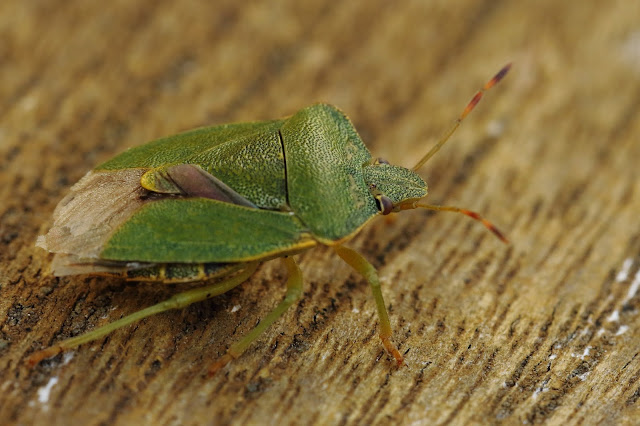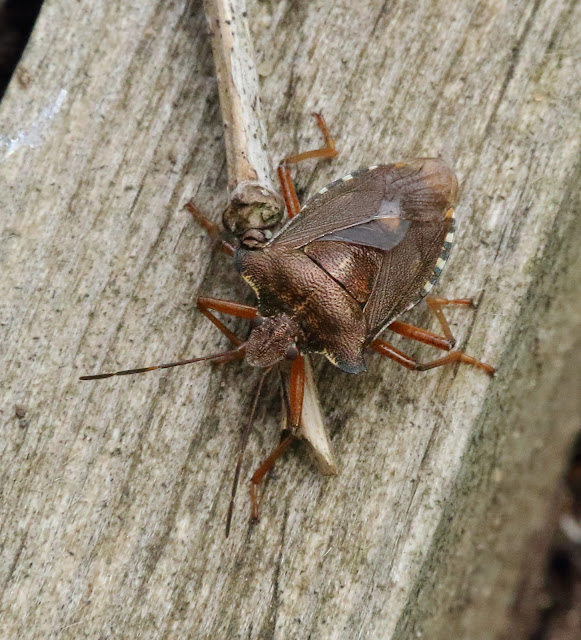Polly M pointed out some interesting little 'beetles' just hatching from their eggs last week, and on closer examination, these seemed to be the 'first instar' (or first life-cycle stage) of the
Common Green Shieldbug. There were a quite a number of these little shieldbugs hatching together from their eggs on a Sweet Pea leaf. The following day they had dispersed leaving just the empty eggs.
As often seems to happen when one sees something, Andy M started noticing shieldbugs all over the place. Shortly afterwards he spotted an adult
Common Green Shieldbug, and a
Red-legged Shieldbug in the garden, and a splendidly-coloured
Hairy Shieldbug adult along the ORC.
The excellent 'British Bugs' website was extremely useful in identifying these True Bugs, and a very good source of information about these interesting creatures.
https://www.britishbugs.org.uk/index.html
First instar Common Green Shieldbug - just hatched ..
.. and their empty egg-cases the next morning
Adult Common Green Shieldbug
Adult Common Green Shieldbug
Adult Common Green Shieldbug
Adult Red-legged Shieldbug
Adult Hairy Shieldbug on the flowers of Ladies Bedstraw
Adult Hairy Shieldbug








No comments:
Post a Comment